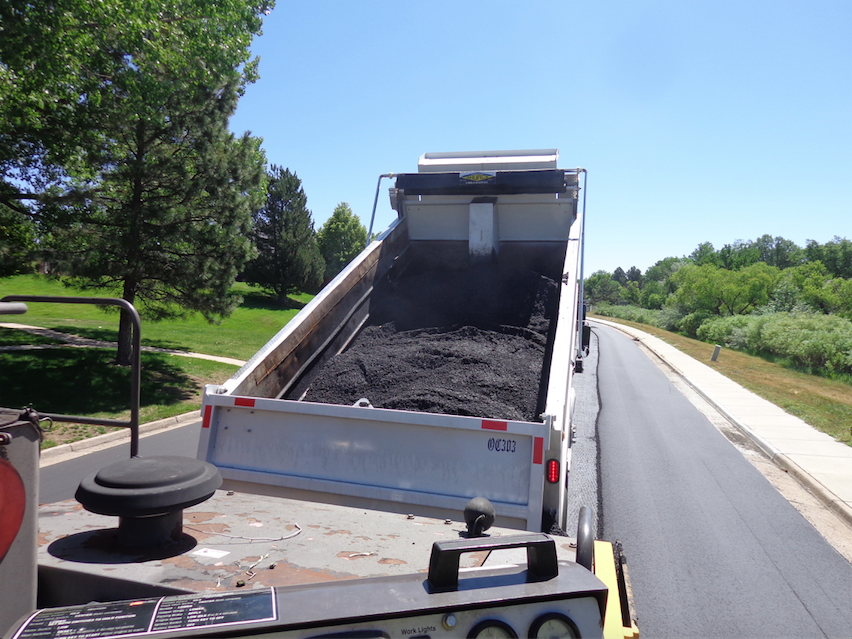Plan Material Dumping
BY John Ball

Strategically placing signs makes for easier material moves, less chance for mistakes
Even new truck drivers who have been subcontracted to work your milling or paving job for one shift can operate in a safe manner if you give the drivers signals and signs they already understand. From something as complex as a stoplight that you can modify to “fit” your operation to something as simple as a spray-painted X on the paver’s hopper, you have options to move perishable material more efficiently, with less opportunity for spills that the skid steer operator gets to clean up. You also have options when it comes to designating areas for trucks to clean out leftover material. Let’s take a look at some examples.
Oftentimes, a crew will purchase a stoplight, change out the bulbs or the lens covers to customize it for the operation, and then bolt and wire the stoplight on the paver operator’s platform so that the unit is clearly visible in the haul truck drivers’ mirrors.
In the example here, the operator uses the red lens at the top of the signal to tell truck drivers when to stop backing. This lets the paver operator slowly nudge the paver forward to meet the truck, minimizing the “bump” that can cause material segregation. The next lens is an “up” arrow in a yellow lens that tells the driver when it’s time to lift the body up, charging the hopper. That yellow also means caution, so the driver knows to let off the brake, allowing the paver to push—or drive—the operation forward slowly. The next lens is the “down” arrow in a yellow lens that tells the driver when it’s time to lower the body. Again, the yellow color reminds him to be cautious. The bottom lens is clear. When the paver operator shines that one, the driver knows it’s safe to pull the truck away from the paver.
Think about where the haul truck will go next.
Use safety cones and/or internal traffic control signs to funnel emptied haul trucks to a designated area for clean-out. You don’t want drivers to randomly select their own areas—such as in front of the paver—to lift the bed and clean out stuck, cold material. You certainly don’t want drivers getting out of their trucks with shovels or other tools to work at releasing material where other equipment is driving or backing. While those drivers are supposed to wear safety vests and hard hats, an unexpected pedestrian walking around the side of truck is not a surprise you want the skid steer operator to encounter. It doesn’t matter what PPE he’s wearing.
At this place for trucks to clean, you may also have a raised platform where a worker sprays cleaned beds with a release agent before the truck moves to the milling portion of the project, if applicable. Just keep in mind that you have the power to manipulate how trucks will move through your work zone to keep your workers safe and your material at optimum quality.
Another method for communicating with haul truck drivers and milling machine operators is with the simple spray paint can mentioned above. If you need to fill multiple haul trucks in a lane adjacent to the milled lane, the offset conveyor might pose a problem for the machine operator. Give him his best chance to hit the truck’s bed right on the mark with sprayed marks or chalk marks on the truck railing. If a conveyor is filling the paver hopper, once again, the X marks the spot for spill-free work.
Don’t be afraid to mark equipment with circles and spots that make the job easier and quality more assured. Chalk is easy enough to wash away and spray paint can be painted over at the end of the job, if necessary. But the bonus you earn for top quality paving is worth a little extra cleaning.
John Ball is the proprietor of Top Quality Paving of Manchester, N.H. He provides personal, on-site paving consulting services around the United States and into Canada. For more information, contact him at (603) 493-1458 or tqpaving@yahoo.com.
